As the beauty industry continues its growth in China for 2024 specially online, we are seeing more and more niche segments gaining in popularity with Chinese consumers, and that is the case for our today’s topic: Beauty Tech. Beauty tech simply refers to tools that are designed to be used in skincare and cosmetics: it goes from your simple skin cleaning brush to a laser scar treatment machine or LED helmet to stimulate hair growth and so on.
As the market is becoming more competitive and consumers are in search of innovative products, cosmetics companies have everything to win by investing in beauty tech just like Shiseido has been doing.
Cosmetics Market in 2024
Cosmetics products combined with high technology such as radiofrequency, LED lights, micro electric current, and T-sonic pulsation are some favorites among the new generation of beauty products consumers.
China’s beauty and personal care market is on a trajectory of robust growth, forecasted to reach a staggering $85.07 billion (607 billion RMB) by 2028. This surge positions the country as a significant player, accounting for nearly one-sixth of the global beauty sales.

Top 5 Beauty Trends in China
No doubt the beauty tech industry has been revolutionized all around the world, but China is looking more engaged with it. From men to women, everyone has indulged in this competitive beauty craze. The top five tech beauty trends are present below to inform you about these trends.
1. Expansive Cosmetics is on rise
Key Beauty Categories to Watch in 2024
- Premium Hair Care: The trend of “skinification” of hair care leads to premium products, with a focus on hair loss solutions and scalp care.
2. The Popularity of Foreign brands
Global cosmetics brands are turning towards new technologies in order to maintain their edge over Chinese competitors. The country’s market for skin care and beauty products was worth $20 billion USD last year alone, but as competition heats up it is becoming increasingly difficult To maintain an unbeatable position within this sector of the economy .
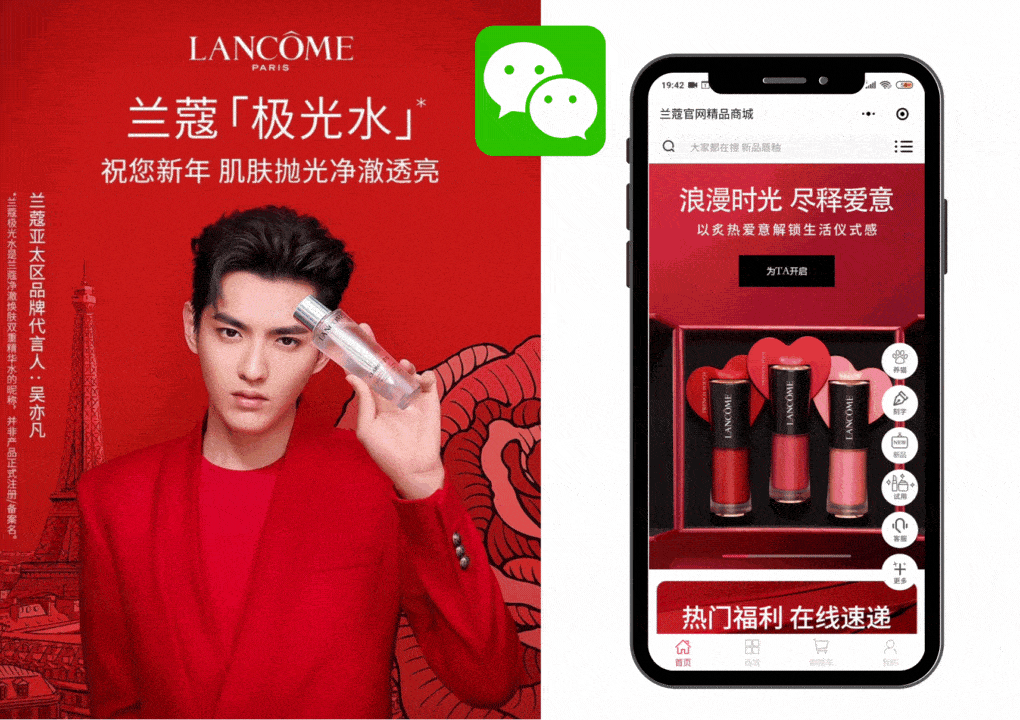
A lot of young Chinese girls prefer Foreign brands when choosing cosmetic products. They believe that foreign brands contain not only luxury cosmetics but also excellent beauty tech quality. According to the Chinese millennial, everything is innovative and has a great image from Japanese to Korean products in front of other people. So the foreign brand popularity is at its peak now in China.
3. Men Beauty
Besides women, men have also started to use beauty tech products and follow the latest trends. They have been becoming more conscious of their skin, clothes, appearance, etc. Therefore, various brands have launched beauty campaigns by showcasing the male community and preparing male tech cosmetics for Chinese men.
4. Natural Products attraction
For Chinese, the word “Natural” has a real charm. So natural products appeal to them a lot. Furthermore, several webinars or seminars are set in motion for the awareness of the public related to pollution and its killer effects on people’s skin. This course of action continuously encourages the public to utilize natural and cruelty-free tech cosmetics to avoid any harm to their skin.
Clean Beauty: A surge in demand for natural and organic formulations is fueling the clean beauty trend, focusing on sensitive skin and sustainability.
5. Cosmeceuticals
Whether the Chinese want a skin spot treatment or anti-aging solution, they like to get advice from a pharmacist. Cosmeceuticals are the combination of two words; beauty and pharmaceutical. Hence, the trend of these tech products made by following this technique is on the rise.
As the Chinese are more concerned about cosmetics, beauty companies have moved toward cosmeceuticals goods.
Derma Skincare: Dermatologically-tested products are gaining popularity, with an emphasis on efficacy and clinical evidence.
Microbiome-based Skincare: Aligning with the demand for personalized and bespoke beauty solutions, products catering to the skin’s microbiome are rising in prominence
6 Perfum are trendy
Mass Fragrance: The fragrance sector is evolving, with an increasing demand for niche brands driven by Gen Z’s daily use of scents.
in 2024 the perfume industry in China has undergone a significant transformation, rapidly evolving from a niche market to a burgeoning segment within the beauty sector. The demand for fragrances in China is not just confined to traditional luxury brands but is increasingly inclusive of niche and independent labels, catering to a sophisticated and tech savvy consumer base. This shift is driven by a growing appreciation for unique, personalized scents and a cultural trend towards self-expression through fragrance. The rise in disposable income and exposure to global trends, facilitated by digital platforms, has further fueled this expansion.
7- Little Red Book : main social Media for beauty Brands
87% of beauty Users in China use Little Red book primary source for discovering new brands.
Xiaohongshu, also known as Little Red Book, has solidified its position as a crucial platform in China’s beauty sector, with an impressive 87% of beauty enthusiasts regarding it as their go-to source for exploring new brands and products. This app has become a significant discovery tool in the Chinese beauty industry.
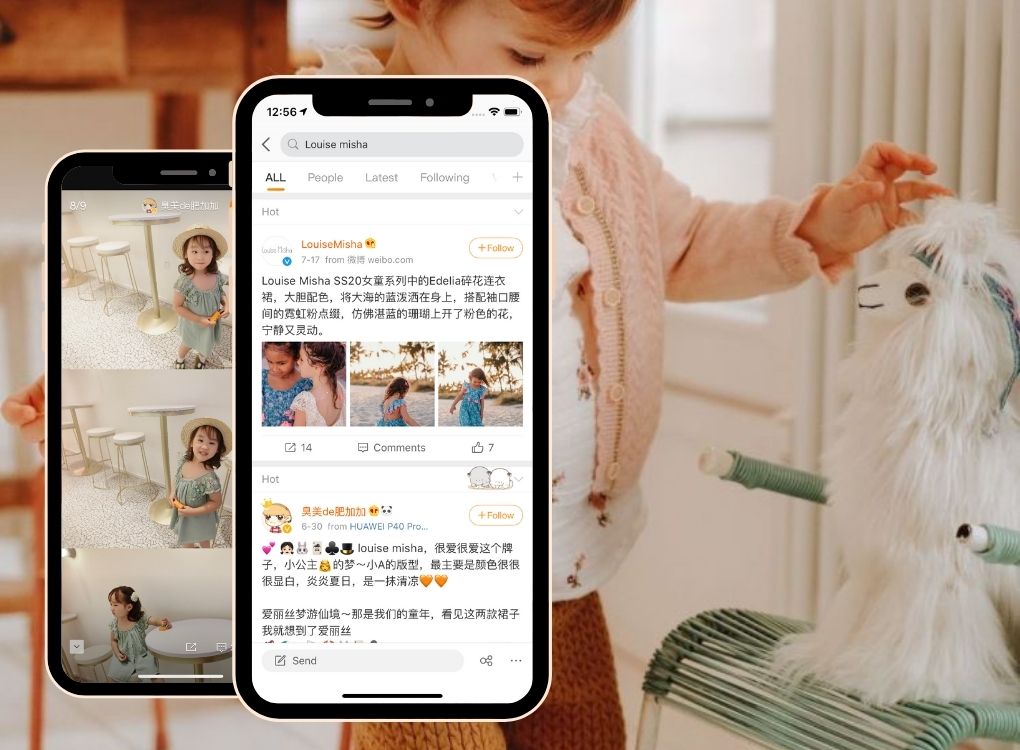
Known for its sophistication, Xiaohongshu stands apart from other major Chinese social media platforms like Douyin and Weibo. It appeals to users who are drawn to niche, visually appealing trends, such as elaborate skincare routines, fashionable brunch locations, and other high-end lifestyle experiences.
8- Douyin , major tool for Brand awarness
For beauty brands in China during 2023-2024, Douyin, the Chinese version of TikTok, has emerged as a game-changer. The platform offers a unique blend of entertainment, social interaction, and e-commerce, making it an indispensable tool for beauty brands aiming to capture the Chinese market. Douyin’s algorithm-driven, short-video format provides a powerful means for brands to engage with younger audiences, particularly Gen Z, who are driving the latest beauty trends. By leveraging influencer partnerships and creative content strategies on Douyin, beauty brands can effectively showcase their products, build brand narratives, and tap into the platform’s vast user base for increased visibility and sales. As a result, Douyin is becoming a focal point in the digital strategy of beauty brands in China for 2023-2024.
9- The Rise of Premium Haircare in China: A Market Transformation
In recent years, China’s haircare market has witnessed a remarkable shift towards premiumization, reflecting a broader trend in the beauty and personal care industry. This evolution marks a significant change from traditional haircare products to more sophisticated, high-end options, mirroring the ‘skinification’ of haircare. Emergence of Premium Haircare is a trend for 2024
The Chinese consumer’s growing affinity for premium haircare products is driven by an increasing awareness of hair health by big players, influenced by lifestyle changes and Health concerns. This trend aligns with the global movement towards well-being, where haircare is seen as an extension of skincare. The market now demands products that not only clean and condition but also offer targeted treatments for specific hair and scalp issues.
10- The Power of Testimonials in China’s Beauty Industry
In the dynamic landscape of China’s beauty market, testimonials have emerged as a crucial element for brands aiming to establish credibility and connect with consumers. The impact of authentic, relatable experiences shared by real users cannot be understated in a culture that highly values peer recommendations and social proof.
Building Trust through Consumer Voices
The beauty industry in China, characterized by a large choices and intense competition, often leaves consumers overwhelmed. In this context, testimonials act as a guiding light, offering genuine insights and personal experiences that help demystify products and their effectiveness. They play a pivotal role in building trust (oh yeah) , a key factor in the decision-making process of Chinese consumers.
Influencer and KOL Testimonials: A Game-Changer
Key Opinion Leaders (KOLs) and influencers wield significant influence in China’s beauty market. Their testimonials, often perceived as more trustworthy and less biased than traditional advertising, can dramatically sway consumer opinions and buying behaviors. Brands collaborating with these digital celebrities for testimonials can tap into their massive followings and gain instant credibility.
The Digital Sphere: Amplifying Testimonial Reach
Platforms like Xiaohongshu (Little Red Book) give good ground for sharing and amplifying testimonials. User-generated content on these platforms often goes viral, providing an authentic and relatable narrative for beauty products. This digital word-of-mouth is a powerful tool for brands to increase visibility and enhance their reputation.
How to market a cosmetics brand in China?
Are you going to launch a beauty tech brand in China? If yes, you have to know basic tactics for the market of your cosmetic brand in the Chinese market. China has a big market for a beauty tech brand that offers you multiple opportunities and can give you a tough time with your branding. The significant tricks for marketing beauty tech products are presented below to avoid any inconvenience in your cosmetics business.
It is an admitted fact that more than 90% of Chinese girls research on social media to get to know what is best and trendy tech cosmetics for them. For this purpose, most make-up brands analyze KOLs and KOCs demonstrations. It helps them to understand the requirements of their consumers. All this scenario signifies that you have to use Chinese social media for your make-up branding. Some of the social media platforms explain below to give you an idea about beauty marketing in China.
- RED : we mention earlier in the Post
- Douyin : Tiktok we already mentiion it
- Weibo: It is a place for beauty KOLs and cosmetics bloggers, and Chinese older people utilize this platform to see beauty tutorials and beauty brand reviews. So it is a very authentic platform for beauty tech branding. For Weibo marketing, you should have a certified Weibo account. After it, start to target your audience especially Chinese females through influencers and ad running. After some time, you will be popular, and people begin to use your cosmetics due to your credibility.
- WeChat: You can also market your cosmetic tech brand in China by sending a newsletter to consumers through WeChat. WeChat Channel (video) is a new way to get exposure . To engage more people with your brand, you have to initiate group discussions. On the contrary, you can also do branding of your cosmetic brand through paid advertisement. However, it is a better marketing place but not perfect as compared to Weibo and Baidu.
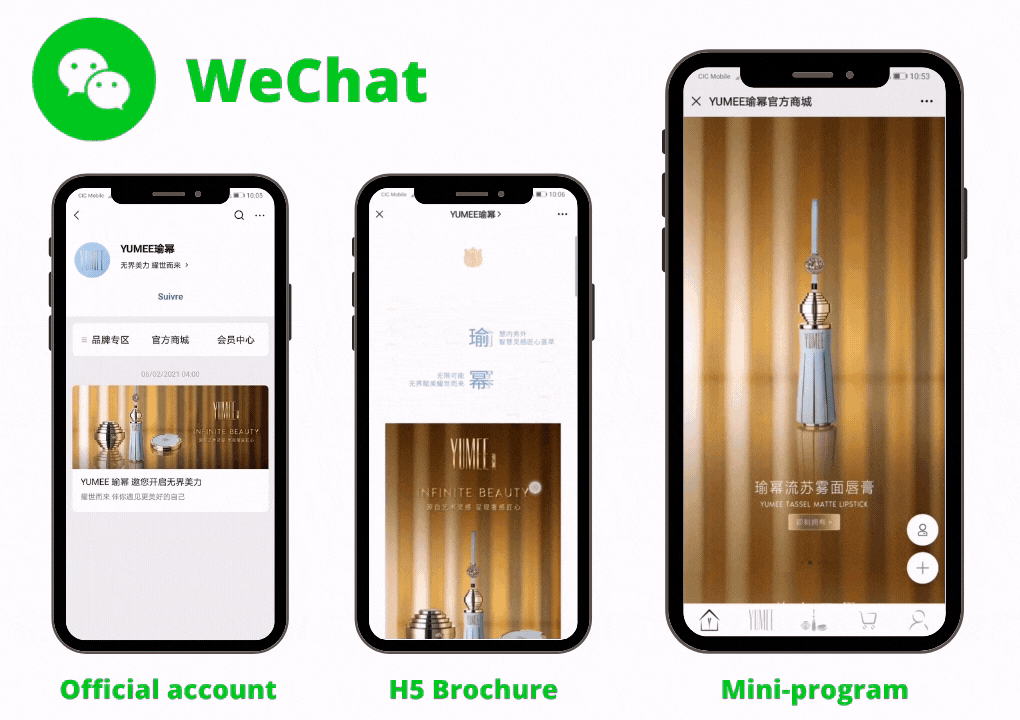
- Baidu: It is a Chinese search engine that Chinese females use to get knowledge about a specific make-up product. They learn that what is the best brand from reviews of different customers. So you have to market your brand on Baidu. For this, create a forum on which people talk about your cosmetics and answer the consumers’ queries. For all, optimize your data on third-party websites for proper visibility to the public and set a target market for branding on Baidu.
Distribution in China
Besides using social media, you can also distribute your tech cosmetics in China. For this purpose, you can choose any technique from the below three methods. Although it is a little bit difficult and time-consuming yet consider it.
- Exclusive Distribution: Try to select an efficient exclusive distributor for the distribution of your cosmetics. It assists you in branding your beauty tech goods.
- Multiple Distribution: If you are handling a cosmetic tech brand, register your brand in China. After it, select various distributors or suppliers for distribution directly and start your branding incredibly.
- Build your own Distribution Network: To create your distribution, set up your physical presence like a store in various cities and go for online selling after this step. It will be costly but give effective results within 1 to 2 years.
Read more
E-Commerce Channels of China to Sell your Beauty Brand
E-Commerce platforms are the most profitable option for branding and selling your beauty tech products. It helps boost customers, and most of them will also become your regular customers if they like your beauty tech products. In this innovative era, you must try E-Commerce channels for branding—the top two ways of utilizing this platform are elaborate below.
With the vigorous development of e-commerce, the entry barrier for new cosmetics brands has been lowered, which lead to the continuous emergence of new brands in China,”
- Cross-Border E-commerce: Using this way, you do not need to have any certified license of business from Chinese authorize. It would be best to make an online eCommerce store, set up your tech cosmetic products, present a detailed description for each beauty product, and advertise your business efficiently. After some time, you will definitely become a champion of Cross-Border E-commerce and get a massive profit from customers.
- China Mainland Ecommerce: The cosmetic companies that have a company license can sell cosmetic goods on Chinese e-commerce platforms. Tmall, Taobao, JD.com, and douyin, VIP.com or RED are the major E-commerce platforms that aid you to sell your tech cosmetic goods efficiently. Like Cross-Border E-commerce, it also requires a deposit to the platform, maintenance of an online store, managing the daily operations for customer services, and advertising of business very well.
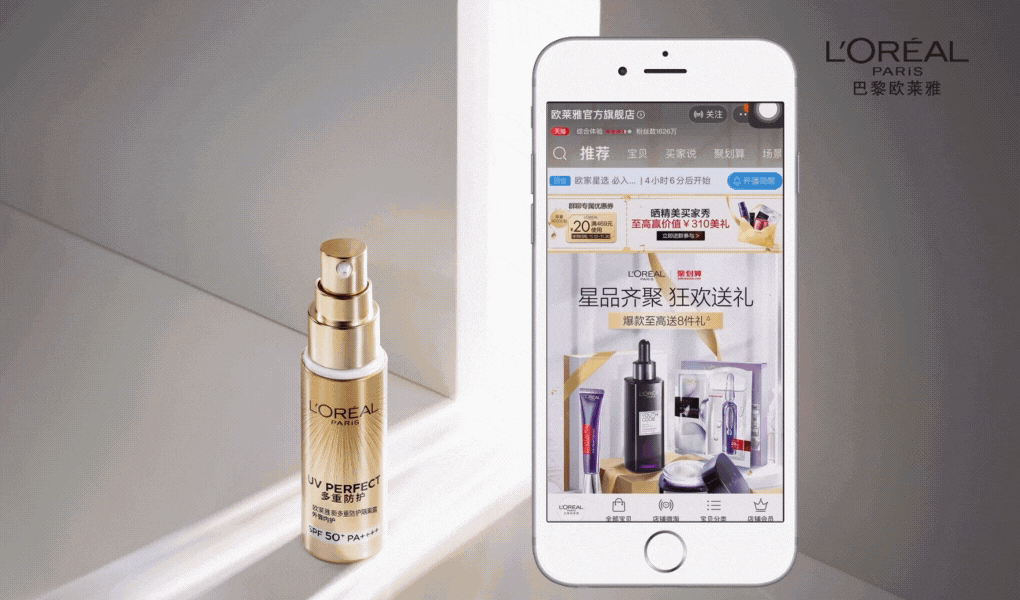
Moreover, it is more beneficial and faster than Cross-Border E-commerce. So choose it and boost the performance of your beauty tech goods by more than 20 percent.
Beauty in China: Case Studies
The beauty tech facial cleanser and influencers
In recent years more and more brands are creating real devices for daily facial cleansing. One of the first was Foreo from Sweden, which, with its pastel-colored shell-shaped face cleaner, made a sensation all over the world, but especially in China where sales increased after influencers such as Guan Xiaotong and Faye Wong shared photos of them with their new beauty object on social media. The KOLs for the Chinese population is a vademecum, especially for the new generation, and the Swedish company has only benefited from this.
The beauty tech massage booster and Tmall
The strategy of the international SK-II brand was instead to rely on one of the many special events made by Tmall. In fact, in 2017 during the “Tmal Super Brand Day”, the Japanese brand launched a message booster that features 7,000 micro-magnetic pulses per minute for firmer skin. The result? The company sold out, selling all 10,000 massage boosters and over $ 6 million (RMB 41.2 million) in overnight sales. Chinese shoppers respond strongly to sales and special promotions. Shopping festivals offer enticing opportunities for foreign businesses wanting to achieve higher sales, gain brand recognition, and market themselves to Chinese consumers.
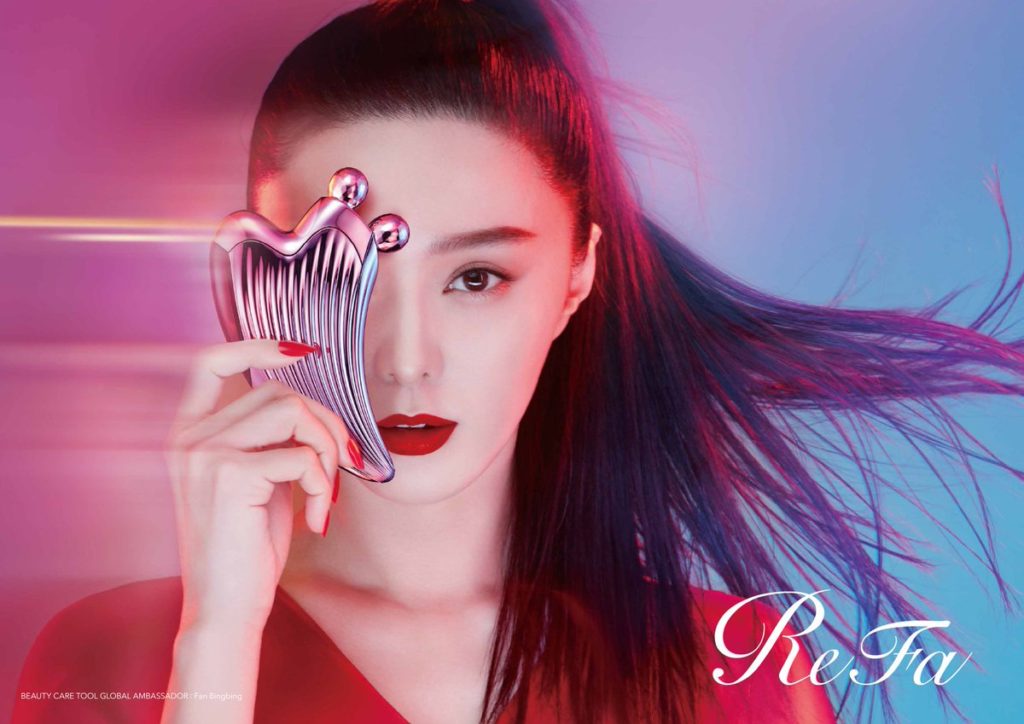
There are cultural differences between the Eastern and Western worlds, even in the field of skincare. In fact, on the one hand, we have Instagram with profiles in which low-tech skincare is supported, on the other the young Chinese are hungry for beauty black tech products able to keep their skin always smooth and young.
Final Thoughts
In conclusion, we can say that beauty brands is an emerging phenomenon in China and getting more popular day by day among Chinese millennials.
In this article, we have discussed the Beauty trend in China and some benignant ways to market your cosmetics in the Chinese beauty Tech Industry. We hope you enjoy the reading and have gotten benignant knowledge from this blog post.
Need Help Launching your Beauty Brand in China?

We are a pure Digital Player, we believe passionately in Digital. Contact us to learn more about the solutions we have developed to help brands like yours to thrive in the Chinese market.


1 comment
Peter
Do you know distributors in the Beauty Tech in China?